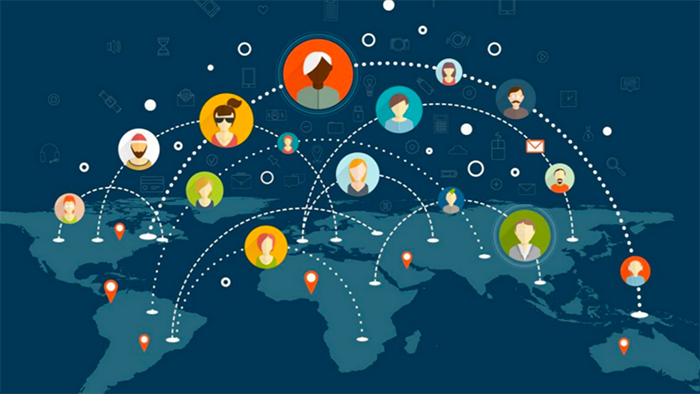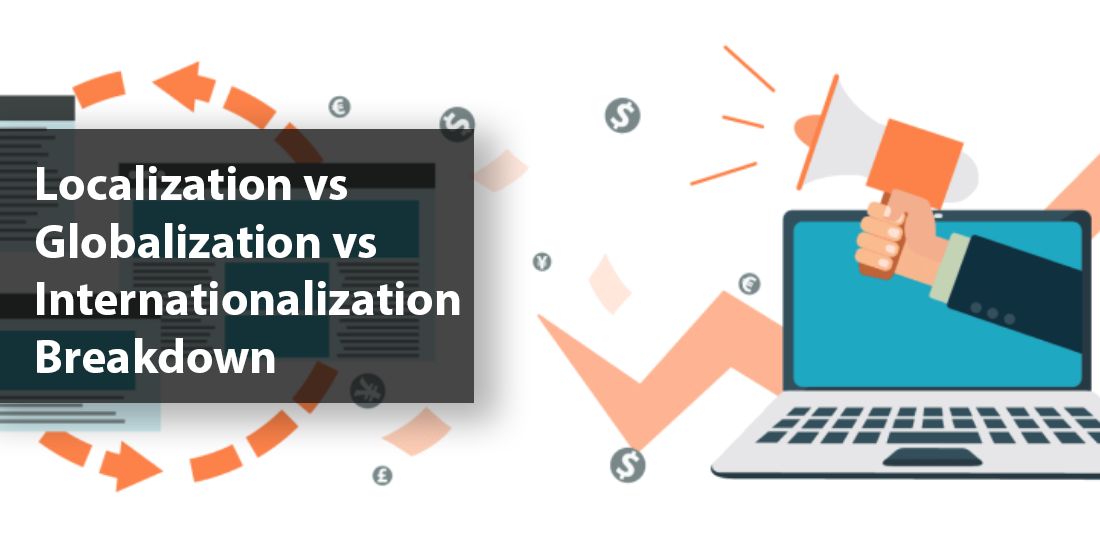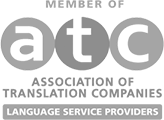Localization vs Globalization vs Internationalization: What is Marketing
Marketing is the act of businesses promoting and selling their products and services. The purpose of marketing is to get people interested in your company’s product or services and this begins with market research, understanding your target customer’s interests, and doing a thorough analysis of your market. We delve into localization vs globalization vs internationalization and how it can be broken down.
From performing an advertisement campaign, brochure, press release, or social media, promoting your solution is the best way to get your business seen and have your brand known.
The Difference Between Marketing and Advertising
If marketing is a whole cake, advertising is just a slice of that cake.
Marketing is the product development product distribution, market research, sales strategy, customer support, and public relations. It entails all the necessary stages of a business’s selling journey that can be expanded through social media channels and numerous different platforms.
By identifying their audience, businesses are able to communicate to them, cater their message to them, and build their brand loyalty over time.
Advertising is one component of marketing. It’s a strategic effort to spread awareness of their product or services. Usually involving paid advertisement, it’s one of the most effective ways to get your solution seen fast.
Localization vs Globalization vs Internationalization: Importance Of Marketing Catering to Different Culture Environment

Illustration on the Importance of Marketing
Marketing to other cultures and countries can expand your customer base reach, however, they can be disastrous if not done correctly.
Cross-cultural marketing is about understanding and segmenting your marketing campaigns towards various ethnicity instead of developing a marketing program that reaches to the general market. This begins being in tune with the culture you want to target.
Cross-Cultural Basics
You have to take into consideration your target culture’s norms and religion. For example, in the Middle East, the culture considers it offensive to sit casually with a foot rested on your opposite knee, as you’re showing your foot.
Understand that it’s vital to understand that certain things you do or say may not be received in the way that you intend.
Language Barriers
Hiring a native speaker to translate marketing pieces for different regions is crucial. This ensures that the language is broken down from dialects and accents, allowing your viewers to resonate and understand your marketing message.
Most businesses don’t get the success that they deserve because they don’t tailor their marketing campaigns to a specific culture and region.
In addition, it’s difficult to translate acronyms, slang, and idioms to other cultures, that’s why it’s crucial to have your campaigns written and designed in a way that your audience will understand.
Understanding Your Market
To understand your market, you can divide it into tiers.
Different countries have different tastes and cultures. Within a country’s borders, there are several diverse subcultures. From mountains to desert to small towns to large cities, they all interact differently towards your company’s marketing campaign.
This is where you use different marketing campaign techniques such as automation and A/B testing. You’ll have to be successful and test hundreds of times and be flexible to cater to cultural differences. Don’t make assumptions and always have a local counterpart or a trusted translator that understands the country’s culture and people.
Different Thought Process and Value
Thought processes and values vary throughout different countries and cultures, and this is why some marketing campaigns are perceived differently. For example, Japanese cultures tend to make buying decisions based on groups such as families. While in America, people make their purchasing decision much more individualistic.
By using marketing automation to segment your offerings towards different cultures, you’re able to monitor how your customer base is reacting towards your campaign.
As you track the movement and analytics, you’re able to cater and tinker your campaigns to match your target audience. This results in more sales, a larger customer base, and more revenue for your businesses.
Localization vs Globalization vs Internationalization: Marketing In Different Environments

Marketing in Different Environments
Localization
Visiting a website that wasn’t intended for your type of audience can feel like traveling to a foreign country that you weren’t planning to visit. You don’t know the culture, people, or the currency. You struggle to read the sign and you have a hard time trying to find things.
This is why localization is important. Localization is the process of adapting a product, service, or content to a specific market or location.
Addressing specific elements to a target market including:
- Addressing local regulations and legal requirements, modifying graphics, and design to properly display translated text
- Changing content to suit preferences
- Converting to local currencies and units of measurement
- Using proper formatting for elements like dates, addresses, and phone numbers
Localization makes content more familiar and appealing making your audience more likely to buy. It allows your organization to expand your reach to a new audience, build credibility, and increase sales while increasing loyalty among existing customers.
This is seen through a Common Sense Advisory Report saying that 75% of consumers are more likely to purchase services or goods if the corresponding product information is in their native language.
Localization should be performed on:
- Your website
- Disclosure documents, such as terms and conditions
- Marketing materials, including TV, radio, and print ads
- Training materials
- Online HELP
- Product warranty materials
- Product manuals
- Service materials
- User Interfaces
- Quick-start guides
- Globalization
As technology progresses and advances from a global perspective, the more closer the world connects together.
Globalization is the process of the interdependence of the world’s economies, cultures, population through cross-border trade in goods and services, flows of investment, people, information, and technology.
This has created larger markets that enable companies to reach more customers at a higher return on the fixed costs of doing business. This is seen by technology firms taking advantage of their innovation and sourcing of materials.
With more competition from worldwide companies, the more high quality the products are, giving customers more choices and better products to choose from.
This has led to more job opportunities for more specialized jobs in high-tech areas. From computers, transportation equipment, finance, and science, globalization has accelerated the growth of technology and the way we live in the world.
An example of this is large restaurant trains such as McDonald’s operating hundreds of countries or the recognizable logo of Nike that transcend culture and language.
Internationalization
Internationalization is a strategy done by corporations that involve making products and services adaptable, allowing them to enter different international markets. These processes often require individuals that are experts in these areas. It makes localization easy for target audiences that vary in culture, region, or language.
Here are some different types of Internalization:
Design and Developing products in a way that removes barriers to international deployment or localization.
For softwares, this enables the use of Unicode, proper handling of legacy character encoding, concatenation of strings, and avoiding dependence in code of UI string values.
For products, this can be seen in IKEA’s furniture, as they internalize the assembly instruction for their furniture by using only diagrams and illustrations. There is no text that needs to be translated.
Enabling code to support language, culturally related, local, or regional preferences. This involves incorporating predefined localization features and data taken from existing libraries. Examples can be date and time formats, number formats, local calendar, and the number system.
Internationalization doesn’t necessarily include localization of the content, product, or application into another language. It focuses on the design and development that allows migration and product to easily take place in the future.
Why Choose TranslatedRight For Translations Services & Proofreaders for hire
Translated Right is a certified professional translation service that provides translations in 50+ languages. Our translation services languages include English, Chinese, Malay, Tamil, Japanese, French, and more. Providing fast, accurate, and reliable, professional translation services for all types of documents, formats, and lengths.
With over 5000+ professional and experienced translators, we’ve filtered out the best translator using our stringent and detailed interviewing process, ensuring that you can hire only the best-qualified person for your specific translation document. This has allowed us to simplify the whole entire technical translation process, resulting in a smooth application process.
This is seen by satisfied customers from our competitive prices, friendly and efficient translation services.
If you’re looking for a professional translation service near me that can translate from a source language to the desired target language that conforms to the requirements of the technical side of your industry, Translated Right can help you today. Providing a streamlined and hassle-free process, get your document translated by a professional service today.









